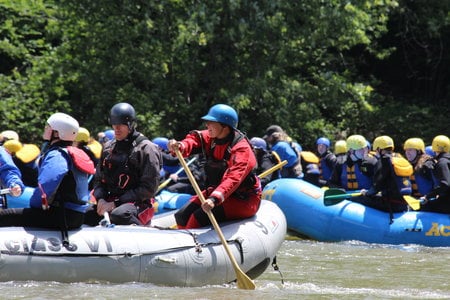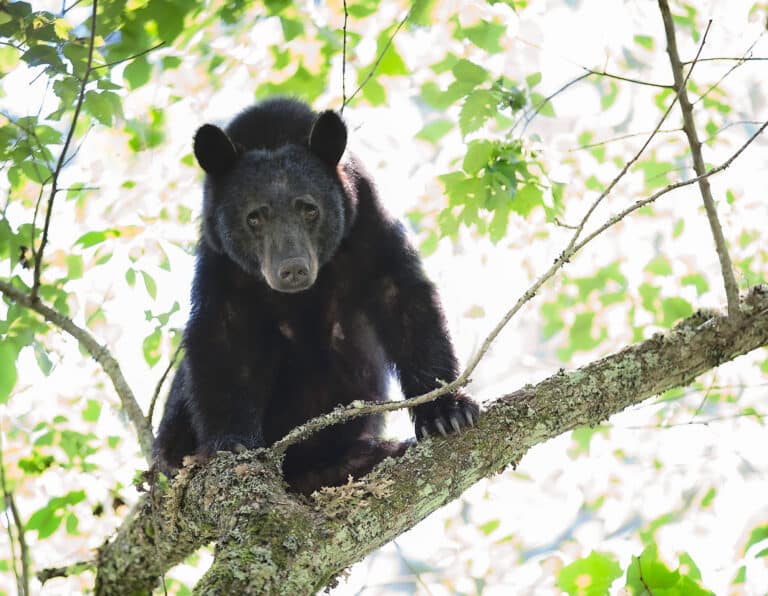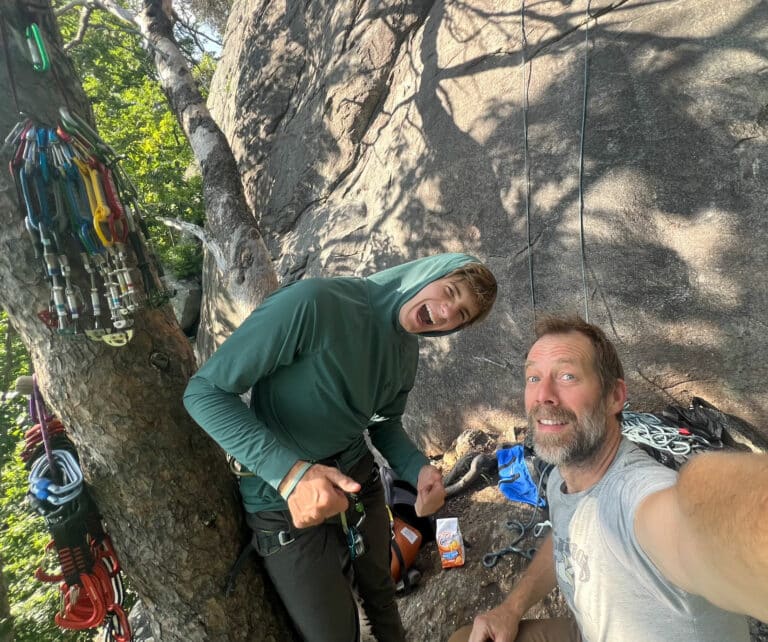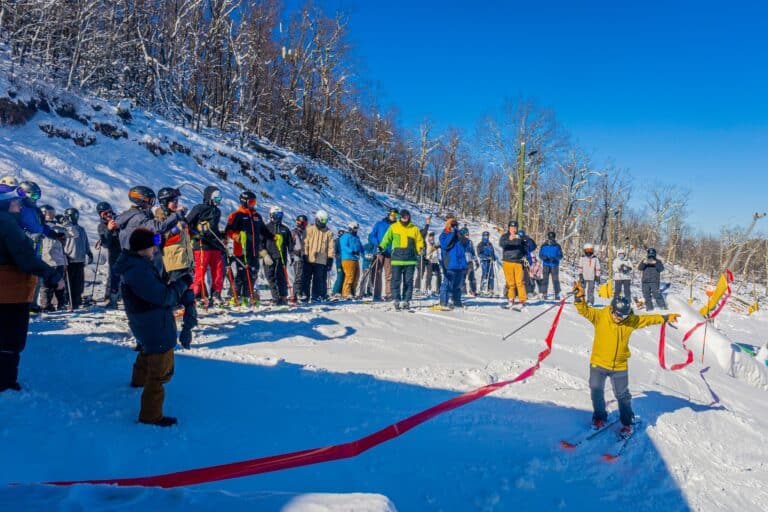The New River Gorge has seen a summer of unusually high water levels, which has been a blessing for the normally dry rafting season.
“Five feet is the new zero,” a friend told me as we put on at Cunard last Tuesday.
The river flowed big and brown below the concrete ramp and pods of commercial rafts floated swiftly along. Eager faces peered beneath matching helmet rims, wide-eyed and ready for a dose of wet and wild adventure.
I reminisced on my brief time here as a raft guide and the newness I experienced every day I guided a crew down the Gorge. Although I’ve paddled the New more than any river, there was always a lump in the back of my throat before I entered the Keeneys, an unpleasant churning in my stomach as I dropped behind Thumb and cruised through Double Z. What if I didn’t hit my line? What if someone in my raft fell out? What if I fell out? There’s a heady weight of responsibility that goes with raft guiding, and I never once considered my boating abilities above the unharnessed power of that river. Last week proved to be no exception.
About a year ago I hit the plateau. Adventurers of every breed have heard of this phase. I had grown comfortable kayaking the rivers I knew and set aside any desire to push my skills to the next level. Between finishing college and finding a job, life simply “got in the way” of my paddling. In all reality, that was probably just an excuse. Now that both of those “life issues” have been resolved though, the boating bug has reclaimed its grasp.
Not having paddled anything substantial in over a year, the thought of kayaking the New at record high water levels for August was exciting and nerve-racking all in the same breath. The river was at six feet, which was low considering I had completed two weeks of guide training at flows ranging from eight to eleven feet. That, however, was two springs ago. Nonetheless, I found myself at the Cunard put-in, slumped over in a yellow Mamba I had borrowed from ACE Adventure Gear. I stared at the surging waters and whirlpool-like eddy lines, questioning whether or not those weeks of training would kick in.
When I slid from the ramp into the river, the nerves immediately shrank away. With each stroke forward came a rejuvenated familiarity with the rapids. I remembered why I loved the New River Gorge so much. More specifically, I remembered why I loved kayaking so much: because it’s F-U-N. I couldn’t help but smile as I bobbed up the crests of waves and smacked down into the troughs again. The world’s finest amusement park could not replicate such an exhilarating ride.
By the time we reached the take-out at Fayette Station, I was nowhere near ready to part ways with the New. I hiked my boat up to the top of the last rapid just so I could run it one final time. I sensed both a deep feeling of satisfaction and a gnawing hunger for more as I shed my wet gear and stowed my boat.
That gnawing hunger for more lasted all of 24 hours, after which it sputtered out and all but died when I was informed of a death. Just minutes after I had run my second lap down Fayette Station, a 16-year-old German exchange student was upstream in Middle Keeney. He had been pulled unexpectedly from the safety of the raft by a powerful wave. His exciting vacation had suddenly taken a dangerous turn. It’s unclear as to whether or not he tried to swim back to the boat, but the unrelenting force of six feet of water pulled him downriver and through a sieve known as the Meat Grinder. He was pinned underwater, helpless to the crushing brutality of the river’s flow. The guides worked quickly to extract his body and pull him ashore. They administered CPR until rangers from the National Park Service arrived to take the boy to Plateau Medical Center in Oak Hill, W.Va., where he was pronounced dead shortly before 4 p.m.
This tragedy serves not only as the first fatality of the 2013 rafting season, but also as a stark reminder of our place among the natural world. Rivers do not see gender or color or race; they cannot discriminate against the weak, or distinguish the young from the old. As paddlers, we must be wary that the river will continue to flow downstream with us or without; we can either fight the current or ride the tide. Adventure sports are inherently dangerous, but so too is the commuter’s drive to work and the worldly traveler’s flight overseas. We must not be paralyzed by this fear of the unexpected, however, for the unknown can bestow upon us an unbounded future.
With every life the river takes comes the raw remembrance of my own imminent death. I’ve seen the power of the river, looked it square in the eye and begged for mercy. Despite this, I cannot help but be emboldened to continue seeking experiences that force me to be in the present. Although this 16-year-old boy lost his life to the river, hundreds of others, myself included, lived to see another day. The pain and sorrow caused by this boy’s (and every paddling victim’s) untimely death will not fade quickly, but I urge paddlers not to retreat from the river’s edge. Instead, charge forward and embrace the mysteries of this world one stroke at a time.








